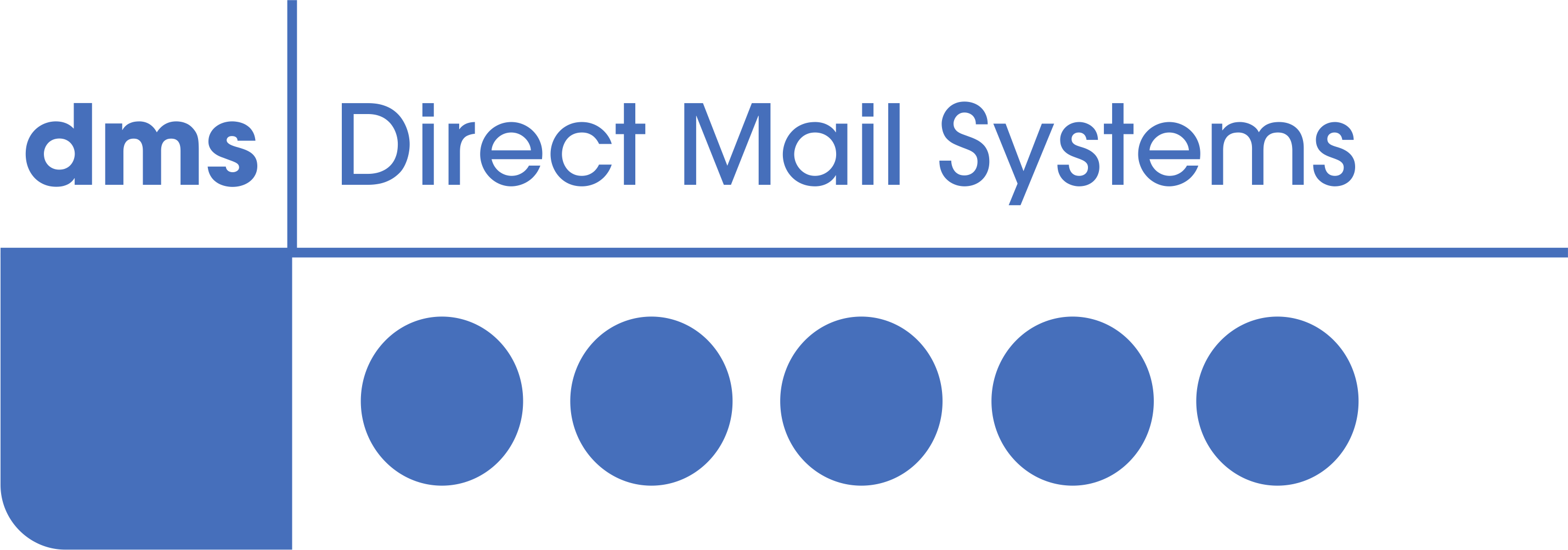When it comes to direct mail, timing can be just as important as the message itself. You could have the most compelling copy, eye-catching design, and irresistible offer, but if your mailer lands on the wrong day or during a period of low engagement, your return on investment (ROI) might not live up to expectations.
At Direct Mail Systems (DMS), we know that successful direct mail campaigns are built on strategy, not just creativity. And one of the most frequently asked questions we get from clients is: "When is the best time to send out direct mail?" The short answer? It depends. But don’t worry, we’re here to break it down for you.
- Understanding the Direct Mail Lifecycle
- Timing by Campaign Type
- Seasonal Considerations
- Best Days of the Week to Deliver Mail
- Lead Time & Logistics
- Integrated Timing with Other Channels
- Your Ideal Timing Strategy Starts Here
Understanding the Direct Mail Lifecycle
Before we dive into calendars and schedules, it’s important to understand how direct mail fits into your overall marketing lifecycle and customer journey. This will vary between organisations and is important to understand as direct mail isn’t just a one-off message, but a physical touchpoint in your customer journey which can influence perception, drive action, and build loyalty over time.
Like any form of marketing, its impact is heavily influenced by timing. Sending a perfectly crafted postcard a week after a key buying period might mean a missed opportunity. On the other hand, hitting doorsteps just before decision time can give you a competitive edge.

Timing by Campaign Type
Let’s start by looking at different campaign objectives and how timing might affect their success.
1. Promotions & Special Offers
If your goal is to drive sales, timing is everything. You’ll want to ensure your mailer arrives just before or at the start of your promotional window – not during or after. Therefore, consider the following:
- Lead time: Plan for printing, addressing, and postal delivery. In the UK, standard mail can take 2–3 working days to arrive.
- Build anticipation: For big seasonal offers (e.g., Black Friday or Christmas), send teasers 1–2 weeks in advance, followed by a reminder closer to the date.
And here's why it matters: 60% of consumers say direct mail keeps the sender’s brand top of mind, influencing their purchase decisions. So hitting the right moment can mean more than just good timing, it can directly impact your KPIs.
2. Event Invitations
If you're promoting an in-person or online event, aim for a multi-stage approach:
- Initial invite: 3–4 weeks before the event
- Reminder mailer: 7–10 days before the event
- Last call: Optional follow-up 2–3 days before (if delivery timelines allow)
3. Brand Awareness Campaigns
Brand-focused mailers for brand awareness campaigns aren’t usually tied to specific dates, so you have more flexibility. But that doesn’t mean timing doesn’t matter.
- Avoid periods when people are distracted (e.g., just before bank holidays or school breaks).
- Consider business cycles — B2B campaigns may perform better at the start of the fiscal quarter, while B2C can benefit from quieter times when inbox competition is lower.
Seasonal Considerations
Time of year can have a significant effect on how well your mailers perform. Here’s a month-by-month snapshot of how seasonal trends could influence engagement:
- January–February: A good time for health, fitness, financial, and self-improvement offers as consumers are often looking to reset after the festive period.
- March–May: Spring brings renewed energy, great for home improvement or DIY projects, outdoor activities, and early summer promotions.
- June–August: Summer months can be hit or miss. While some audiences check out for holidays, others have more leisure time to engage.
- September–October: Back-to-school and pre-holiday planning begin – a prime time for strategic campaigns.
- November–December: Festive season and high competition – but also high spending. It’s recommended to mail early in the month for best results.
Best Days of the Week to Deliver Mail
While there’s no one-size-fits-all answer, some trends are worth noting:
- Tuesday to Thursday are generally the best days for delivery according to the data out there. Mondays can be overwhelming as people catch up, and Fridays are often seen as wind-down days.
- Weekends may work for certain campaigns, especially those targeting households or time-rich audiences - but note that Royal Mail delivery schedules may vary.
Our advice? Think about your audience. If you're targeting business professionals, mid-week delivery is likely more effective. If you’re going after busy families, a weekend arrival might be more effective.
Lead Time & Logistics
One of the key factors in executing a well-timed direct mail campaign is understanding the production timeline. Then you can work backwards to find out when you need to start planning.
- Design & Approval: This will obviously depend on the complexity of the design and the nature of your business - whether you have a long sign-off process etc.
- Printing & Finishing: When you work with a direct mailing house like us, we can print and finish your mailers in as little as 3–7 days, depending on the format and volume.
- Data Processing & Personalisation: This can typically take another 1–2 days to complete.
- Mailing & Delivery: Royal Mail 2nd Class aims for delivery in 2–3 working days; 1st Class usually arrives next working day.
At DMS, we can help you plan this timeline down to the hour, ensuring your campaign lands exactly when you need it to.
Integrated Timing with Other Channels
Direct mail performs even better when it's integrated with digital or online campaigns. For example:
- Email + Direct Mail: Send an email teaser a few days before the mailer arrives to build anticipation.
- Retargeting + Mail: Use data from your website or CRM to trigger personalised direct mail to recent visitors or cart abandoners.
In fact, campaigns with a direct mail element are 27% more likely to succeed than campaigns that don't. These omnichannel strategies work best when timed precisely, something we help our clients achieve through automation and intelligent data use.
Your Ideal Timing Strategy Starts Here
At DMS, we’ve been in the direct mail business long enough to know that timing isn’t just a detail, it’s a core part of your campaign’s success.
Whether you’re planning a seasonal promotion, launching a new product, or building brand awareness, our expert team will help you achieve a stand-out direct mail campaign, from print and fulfilment to postage.
Get in touch today to chat with one of our experts and start planning your next perfectly timed campaign - call 01202 697100.




